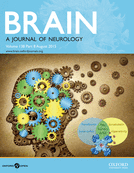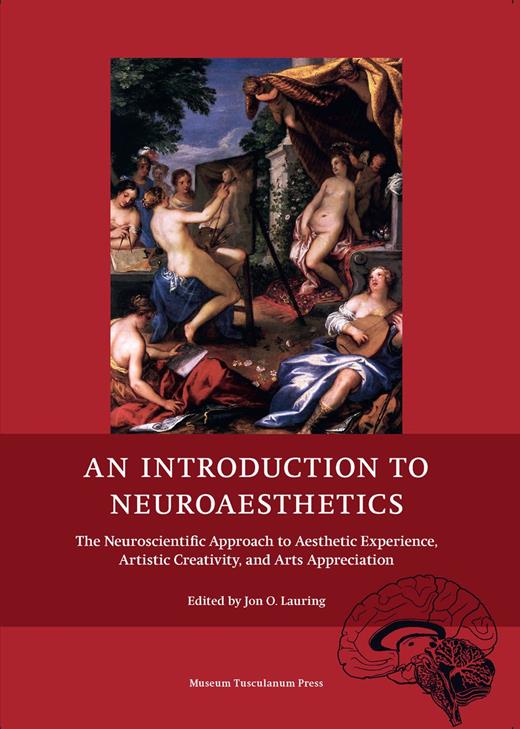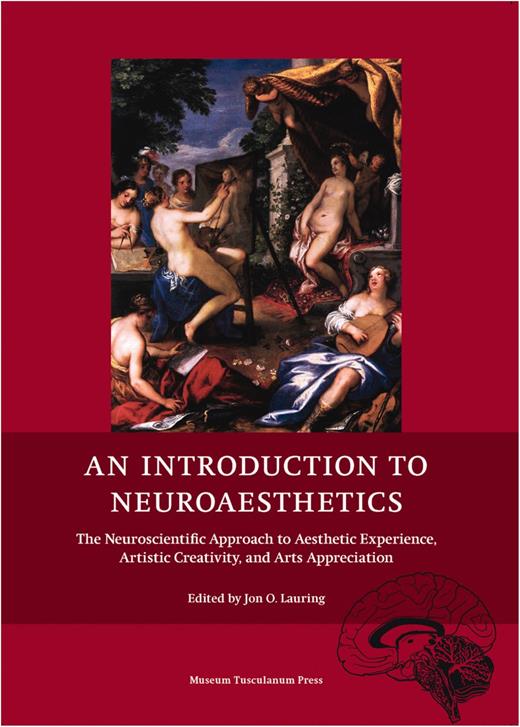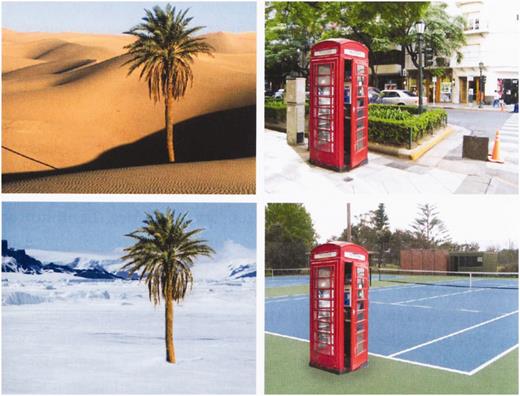-
PDF
- Split View
-
Views
-
Cite
Cite
G. D. Schott, Neuroaesthetics: exploring beauty and the brain, Brain, Volume 138, Issue 8, August 2015, Pages 2451–2454, https://doi.org/10.1093/brain/awv163
Close - Share Icon Share
‘This anthology offers an introduction to neuroaesthetics, a burgeoning interdisciplinary research field that combines neuroscience and aesthetics by applying neuroscientific methods and theories in the study of traditional aesthetics issues.’ So begins the Preface to this interdisciplinary study of neuroaesthetics, the origins of which go back just 15 years and to Zeki’s ‘neurology of aesthetics’ and his introduction of the word ‘neuro-esthetics’ (Zeki, 1999). Despite its short history, neuroaesthetics has been the subject of large numbers of studies and has resulted in a mass of information—more recently in relation to the neural networks implicated. This anthology covers the subject very well, indeed exhaustively, and the authors are to be congratulated for achieving such an impressive overview of a complex subject, to which many authors have themselves contributed.
The book’s 12 chapters range widely, and include a history of the subject; experimental, theoretical and methodological issues; visual art; ‘seeing faces in the brain’; architecture and other environmental aspects; music; literary reading; film; dance; neuropsychology of the arts; and functional MRI studies of creative drawing, story writing, and jazz improvization. It is not feasible to discuss the enormous range of material that the 17 authors bring to bear on this multifaceted subject. Rather, the aim here is to pick out some particular topics of interest, and at the same time touch on some more contentious issues surrounding the subject.
One of the most fundamental issues concerns definitions and exactly what is being considered; ‘neuro’ is easy, ‘aesthetics’ is far more difficult. The book’s glossary defines ‘aesthetics’ as ‘the philosophy of the beautiful; the branch of philosophy that deals with principles underlying beauty and taste, and thus concerning the nature of beauty and the sensory or sensori-emotional values, or judgments of sentiment and taste …’. But not for the first time, as demonstrated for instance in Eco’s historical survey (Eco, 2004), beauty and therefore aesthetics prove difficult to define, and this can cause problems. For example, when it comes to neuroaesthetics and faces, Ishai writes ‘It has been suggested that the rewarding, adaptive value of an attractive face can be dissociated from its aesthetic value’ (p. 171). When does ‘attractive’ become ‘aesthetic’?
AN INTRODUCTION TO NEUROAESTHETICS. The Neuroscientific Approach to Aesthetic Experience, Artistic Creativity, and Arts Appreciation Edited by Jon O. Lauring, 2014. Copenhagen: Museum Tusculanum Press ISBN: 978 87 635 4140 4 Price: £35
Definitions matter when investigating the neurological basis for aesthetics and beauty, as these qualities are subjective and arbitrary—witness that the artist Jack Vettriano sold over 10 million copies of his painting The Singing Butler, and the picture itself for £744 500 in 2004, yet it was rejected by the Royal Academy when it was entered for one of its annual summer exhibitions, and many art experts have reportedly judged the artist’s work unfavourably (Malvern, 2015). Assuming that individuals’ brain circuitry might be broadly similar, how could one explain in neurological terms the differences in aesthetic appreciation? Is it a question of experience and memory, or is it attributable to ‘… the personal, social, cultural, and educational history that have shaped the beholder’s personality’ (p. 116), prestige and monetary factors (pp. 138–9), or even prejudice?
As outlined mainly in the opening chapter dealing with historical aspects, philosophers and then psychologists have grappled with the nature of aesthetics for centuries. Their various approaches and different theories provide fascinating reading, although make heavy demands on those outside these disciplines. Theories about aesthetics naturally lead on to experiments. These experiments have ranged from the 19th century and Fechner’s assessment of how pleasing were rectangles of different proportions in relation to the golden section, discussed in Chapter 1 (pp. 11–13), to a contemporary study of the preference for circles set against backgrounds of different levels of grey, outlined in Chapter 2 on ‘Experimental Aesthetics’ (p. 55). Although valid in themselves, one wonders how relevant are such experiments in relation to the everyday appreciation of art.
Matters become more abstruse in the third chapter, ‘The Theoretical and Methodological Backdrop of Neuroaesthetics’. Here we have Kant’s ‘three absolutely irreducible faculties of mind’; Jacobsen’s seven approaches to the psychology of aesthetic and arts appreciation; Pickford’s ‘five ways of investigating the various topics of the psychology of aesthetic and arts appreciation’ plus two further approaches; five types of art appreciation identified by Funch and then two more types; Thornhill’s ‘ten psychological adaptation categories of aesthetics’ leading to eight arguments explaining the emergence of ‘aesthetic and art behavior’, and three hypotheses concerning ‘the natural selection process accountable for the evolution of art behavior’ (pp. 73–91). Although today’s neuroscientists might baulk at this cornucopia of hypotheses, ironically it is said here—in my view somewhat over-generously—that it was the philosopher Burke who in 1757 for the first time ‘introduces physiological explanations for aesthetic experiences’ (p. 7), thus anticipating the neuroscience that was to follow much later, and which is considered next.
Throughout the subsequent nine chapters, the main emphasis is on the neural networks which underpin the aesthetic response relevant to the individual creative modality or domain. Those networks are most often delineated using functional MRI, but also using other techniques including evoked response potentials. In these chapters, a bewildering array of cortical and subcortical areas are shown to be implicated in the aesthetic response to an equally bewildering variety of stimuli appropriate to the domain. There seem to be almost as many networks involved as there are experiments, and sometimes the observations are contradictory—for example, whether aesthetic appraisal and emotion are associated with the insula or the medial orbitofrontal cortex (p. 144). It would be a brave investigator who attempted to establish definitively the neural network(s) underpinning the aesthetic response to stimuli in even one domain, let alone establishing—if it exists—any neural circuitry common to aesthetic appreciation in general.
But it is the stimuli themselves forming the basis for most of these studies that are of crucial importance and which raise some considerable concerns. Four examples will suffice, three comprising functional MRI studies. In one (pp. 123–4), subjects classified reproductions of paintings as beautiful, neutral or ugly; selected images subsequently became ‘back-projected onto a screen viewed through an angled mirror’ prior to scanning (Kawabata and Zeki, 2004). In passing, and disconcertingly, ‘Paintings classified as beautiful by some were classified as ugly by others and vice versa …’, and in a later study, a similar classification of both visual and auditory stimuli was undertaken by other subjects, prior to scanning of the volunteers (Ishizu and Zeki, 2011). In the second example, investigating aesthetic preferences for paintings, visual stimuli included images of paintings in three different versions: ‘originals, originals altered ([when] an object was moved to a different location within the frame), and originals filtered ([having been] subjected to a median noise filter)’ (p. 124). In the third example (pp. 136 and 194–5), a study to show ‘that violation of object-context relationships generated changes in visual perception and aesthetic judgment’ used curious images of abnormal and normal object-context relationships (e.g. a palm tree situated in the desert or in a snow scene; a telephone box in a street or in a tennis court; Fig. 1). In the fourth example, changes in evoked response potentials were studied when subjects were presented with 180 nouns ‘categorized as high arousal unpleasant, high arousal pleasant, or low arousal neutral’ (p. 252).
Images of normal (top) and abnormal (bottom) object–context relationships. From Kirk U, 2008; reproduced with permission of Museum Tusculanum Press, Copenhagen.
To what extent do such stimuli relate to ‘real life’ aesthetic experiences, a dilemma encapsulated in the question posed in the excellent chapter on ‘Dance and Neuroaesthetics’: ‘Is a dance movement a piece of art or an experimental stimulus?’ (p. 309). For instance, in the visual domain, in criticizing Zeki’s view reported as ‘artists unknowingly explored the organization of the visual brain’, Massey comments that ‘emphasizing essential constituents of form, color, or other features of an object does not necessarily make it aesthetic or artistic’ (p. 118). In the same vein, Seeley considers that ‘… explanations of how artworks function as perceptual stimuli to selectively stimulate the operations of the early visual cortex do not suffice to explain how they trigger aesthetic experience’ (Seeley, 2006). Such reservations could apply to any of the artistic domains, although dance—which stresses the importance of actively creating an aesthetic experience—is perhaps different.
In the creation rather than appreciation of that experience, again one wonders how applicable to ‘real life’ are the studies in which experts ‘used an MRI-compatible tablet that enabled [them] to draw in the fMRI scanner’ (p. 343); non-experts undertook creative writing using ‘an ingenuous design that enabled participants to write with an extended arm while being imaged …’ (p. 347); and ‘professional jazz pianists [engaged] in jazz improvisation using an MRI-compatible keyboard’ (p. 349). These examples of creation ‘on demand’, discussed in the chapter on ‘Generating Aesthetic Products in the Scanner’, seemingly reduce the vastly complex subject of artistic creativity to simply detecting the neural networks involved.
In essence, how does lying in a scanner equate with the normal circumstances during which an aesthetic experience occurs or an aesthetic creation is produced? Surely no experimental study can produce a genuine aesthetic experience, because a genuine experience is typically both spontaneous and unpredictable, even if the circumstances giving rise to that experience are planned or even contrived. A Renoir can produce a spontaneous aesthetic response even if the visit to the picture gallery is arranged; Beethoven’s Archduke Trio can produce a spontaneous aesthetic response even if the concert visit is planned; a rainbow can produce an aesthetic response in the beholder although unheralded. Furthermore, not only is everyone’s aesthetic experience different, but one’s prevailing mood and thus aesthetic engagement fluctuate—think of being elated, or alternatively preoccupied, irritated or in pain. The personal circumstances must be ‘right’, and Elkins recommended that on viewing art the beholder is ideally alone, has minimal distraction, and takes his or her time (Elkins, 2001)—the very opposite of the experimental environment such as the 2-second presentation of a visual stimulus while the subject lies in a scanner (Kawabata and Zeki, 2004). The environmental context must be ‘right’ too. This is exemplified by Danto’s observation that Warhol’s painted sculptures of a pile of Brillo cartons is ‘art’, but an identically appearing pile of Brillo cartons in a shop is not (pp. 136–7). How would neuroimaging deal with all these issues, which mitigate against the very basis of scientific experiment?
Compared with determining what areas of the brain are activated in response to an aesthetic experience, even more eloquent evidence of localization emerges when focal disease abolishes that experience, and Hjortkjaer cites three particularly important studies in which focal disease of the brain resulted in ‘dissociation’ between perceiving musical structure and feeling it (p. 232). Such examples are considerably more revealing than the various well-known accounts of changed artistic output that follow brain damage (pp. 332–6), and which are recounted in the chapter on ‘Neuropsychology of the Arts’.
In contrast to the subjective aesthetic experiences discussed above, there are at least two phenomena in which an aesthetic experience reveals itself somewhat objectively in everyday life. One consists of the ‘chills’, and this phenomenon is revealingly discussed in the chapter on ‘The Musical Brain’, particularly Blood and Zatorre’s PET study demonstrating a number of cortical and subcortical structures involved while subjects experienced musical ‘chills’ (p. 230). The ‘chills’ were also accompanied by physiological changes in heart rate, muscle tension and respiration rate, reminding one of Burke two and a half centuries earlier. There is an intriguing anecdote confirming the role of the peripheral autonomic nervous system in these physiological accompaniments: a student subject to excessive sweating found that ‘the terrific nervous trend of pins and needles all up and down his torso and head that he would feel with regard to a thrilling passage of a symphony …’ was abolished by an upper thoracic sympathectomy (Sweet, 1966).
The second objective phenomenon, curiously not considered in this book, is crying when experiencing a truly aesthetic experience (Elkins, 2001; Trimble, 2012). Trimble, discussing this phenomenon and the underlying neural circuitry, found anecdotally that music was the most likely art form to induce crying, but many other forms of art too can cause people to cry (Trimble, 2012).
A further area where this book’s contributions are revealing are when aspects in common emerge and bridge different artistic domains and disciplines—albeit I suggest not the ‘communication gap between “literary intellectuals” and “scientists”’ identified by CP Snow (p. 72). For instance, recalling the conflicting attitudes to Jack Vettriano’s painting discussed above, experts and non-experts can have different judgements on aesthetic issues, and can also utilize titling (the labelling) alongside pictures differently (p. 142). Why? Taking as an example aesthetic judgements of buildings, experts and non-experts engage the neuromatrix differently (p. 196), and investigations comparing judgements of experts and non-experts have also been undertaken in various other fields such as dance, piano-playing, and art (p. 140). The role of mirror neurons similarly is discussed in several chapters, including the part these neurons may play in art including implied motion in pictures (pp. 134 and 330), temporal organization of sound and music (pp. 222–3), and during literary reading (pp. 258–62).
Having briefly considered some of the many aspects pertaining to neuroaesthetics, it is only fair to also acknowledge some people’s scepticism about the whole subject and adopt the role of devil’s advocate by asking: is this subject valid and worthy of study? Massey’s and Seeley’s criticisms have been referred to above, and Casati and Pignocchi (2007) have dismissed the role of mirror and canonical neurons in the aesthetic response. But the most critical view is that held by the neuro-philosopher Tallis:
‘It is perfectly obvious why we might expect neuroaesthetics to remain a sterile as well as an almost comically simplistic exercise, even more misguided than trying to explain the genius of a ballet dancer using electromyography. Paintings are treated as mere isolated stimuli or sets of stimuli … Works of art are not merely sources of stimuli that act on bits of the brain’ (Tallis, 2008).
Could not the same criticisms apply to music, literature, and all the other creative arts?
Throughout the book there is some repetition, which the editor has deliberately allowed so that each chapter can stand on its own. Accepting that so many different aspects are covered this seems acceptable, but the book suffers where authors stray from the subject; surely this is not the place to discuss, for instance, prosopagnosia (pp. 169–70), many of the processes subserving music (pp. 212–223) and visuo-spatial perception (pp. 186–194), and mother–child attachment theory (p. 280)? Inevitably the odd error creeps in (e.g. Seeley, 2006, on p. 104 is missing from the references), and there are some misspellings and neologisms. However, these are small quibbles detracting little from the book, which is attractively and well produced, and has an excellent glossary and index.
In the end, readers will want to make up their own minds on neuroaesthetics. For those for whom the subject is meaningful and worthy of study, the contributors have provided a comprehensive, up-to-date and excellent source of information and discussion. Those for whom the subject has little validity will echo the aside on page 93 and agree with Wittgenstein that ‘Explanations come to an end somewhere’ (Wittgenstein, 1968).





